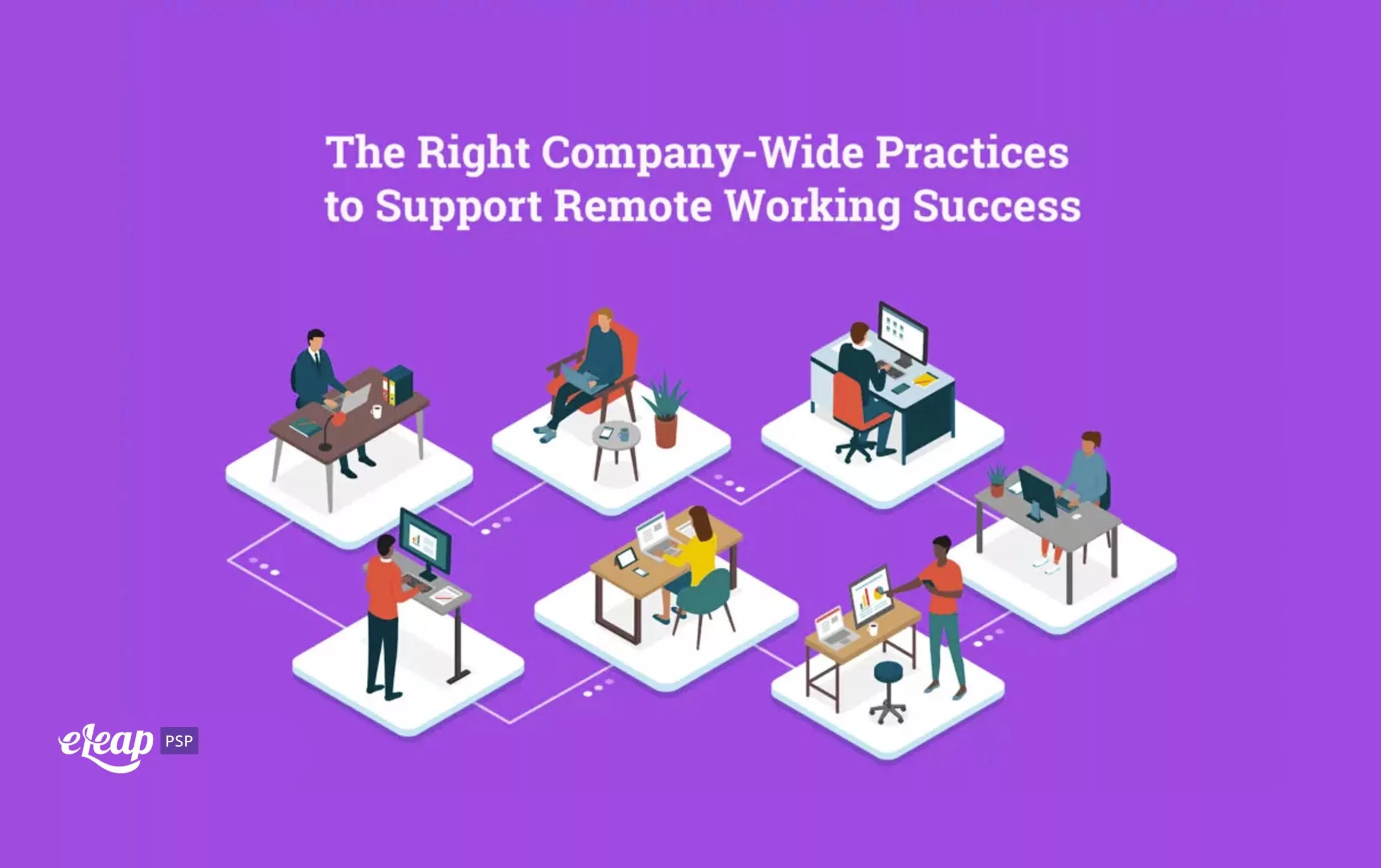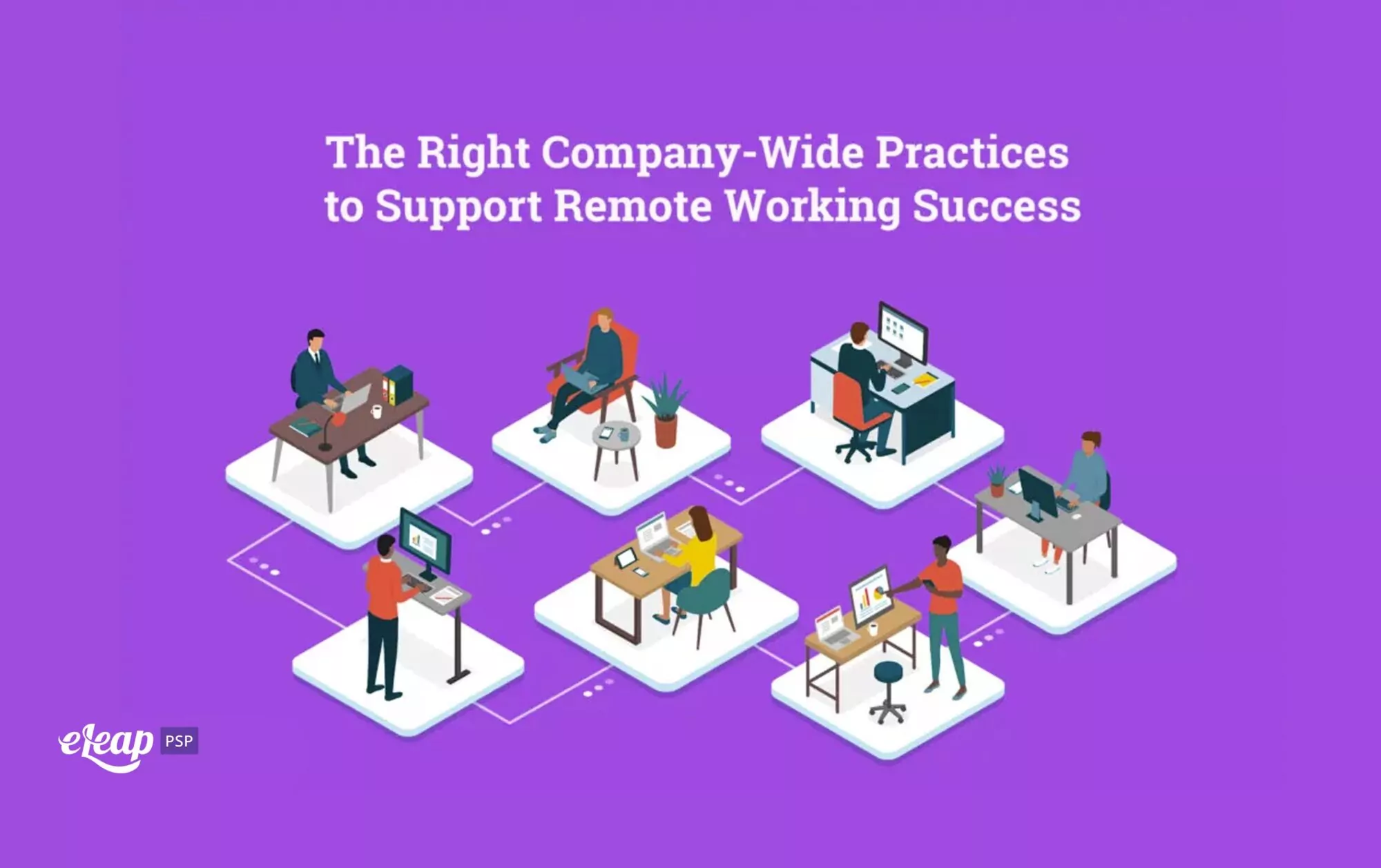The Right Company-Wide Practices to Support Remote Working Success

Remote work is here to stay. Even once the pandemic subsides, there’s a very good chance that remote work will remain a big part of your day-to-day. For some, it may remain the norm. However, if you want to ensure remote working success, some specific company-wide practices need to be implemented. Not sure what those are or why they’re necessary? We’re here to shed some light on it.

Video Rules
Ok, this is probably no surprise to you, particularly if you’ve been paying attention during the pandemic so far. Video is perhaps the single most important tool at your disposal that can significantly increase your chances of remote working success. However, it’s not just for communication. It’s important for creating a sense of personal connection between your employees and managers, and maintaining a sense of humanity, too.
Understand that much of human communication – most of it, actually – is nonverbal. That means it’s not going to come through in the text. Those context clues, from the quirk of someone’s lips to the set of their shoulders and the position of their arms, are vital to fully understanding what’s being communicated. Without them, the true meaning can be lost.
Many people feel a sense of unease about appearing in remote video calls. Maybe their hair’s a mess, or they haven’t cleaned the house yet that week. Perhaps their kids are in the background, or they’re sharing workspace with their spouse. Make it clear from the outset that everyone should appear in the video, as there’s little point in using a tool like Zoom if you’re going to mute the video feed. Again, most communication is nonverbal, so ensuring that you’re getting the message across requires that everyone is visible at the same time.
Bolster Energy
You can call them boost meetings. You might refer to them as energizers, or juicers, or anything else. The name is unimportant. The purpose of these mini-meetings is much more vital. Essentially, these are weekly meetings designed to help amplify the energy of your remote working team for success.
Think of them as close kin of high school pep rallies. Of course, you don’t need cheerleaders, but you do need something to cheer for. What can you use? We recommend that you start with gratitude. You can use almost any format you might want, from random people speaking up to a roundtable-style discussion, but get everyone to share something they’re grateful for that has happened since the last meeting.
There are other things that you can (and probably should) incorporate, as well. For instance, a brief group meditation could be well worth the time. You can also spend some time making announcements, or even asking questions that force your team to think outside the box.
These shouldn’t always be about the company, either. Throw some personal questions in the mix that help your employees come together and feel more connected, like sharing experiences. Throughout all of it, be open and transparent. It’s about boosting energy, and that’s only possible when your team members feel that you’re giving them the whole story.
Stand-Ups Can Help
Remote working can create a serious disconnect, even between members of the same team. For that reason, you may want to institute daily stand-ups for each team. These mini-meetings can last between five and 15 minutes and should be light-hearted, focused more on making sure that everyone feels connected than on discussing “deep” matters.
It’s about face-to-face connection and fostering interaction. Encourage every team to have one of these, although the schedule can vary. Some teams might do better with daily stand-ups, while others would do better with a three-times-weekly schedule.
Rules for All Meetings
All of your meetings, minus the stand-ups we just covered, should follow some specific rules. We’ll lay these out below.
- Agenda – Every meeting needs to have a clear agenda. This should be set out before the meeting begins. Share the agenda with everyone who will be attending so that they’re all on the same page. You can do this by sending it via email before the meeting begins, sharing through a platform like Slack, or even doing a split-screen with the agenda on a separate screen in your video chat.
- Emotion Check – Start every meeting with a check of how each team member is feeling on a scale of one to 10. Have them give a little information about how their day is going so far, or to offer a highlight from over the weekend. This can help to strengthen the social bonds between team members, but also helps make everyone feel more connected.
- Rate the Meeting – Finally, end the meeting by having every employee give it a rating. Again, this could be one to 10, or it could be one to five, whatever works for your organization. Along with the rating, have every employee state what could have been better, or even what went right during the meeting, that fed into the rating they gave it.
Use Goals and Objectives to Align Autonomous Teams
In a remote working situation, your team members must be very autonomous. The problem here is that it can lead to misalignment. To help avoid that issue, use objectives and goals to keep everyone on track and moving forward toward a mutual endpoint.
Of course, you’ll need to set those goals and objectives ahead of time. You’ll also need to communicate them to your team members accurately and promptly. Set them correctly, too. Using a modern performance management system can help boost your changes of success when it comes to your remote working team.
You’ll need company-wide goals, followed by departmental goals, and finally individual goals. Highlight how each feeds into the other and you’ll communicate to individual team members how their contributions fuel success for the entire organization.
Focus on Culture
The final tip here is to create a culture of appreciation, where the contributions and efforts of employees are recognized. It’s about forging an environment where everyone feels like they belong and the only way to do that is through intentional design and implementation.
If you follow these tips, you’ll find that remote work is not only more successful but that the organization operates more smoothly at all times, even if remote work is no longer the norm.